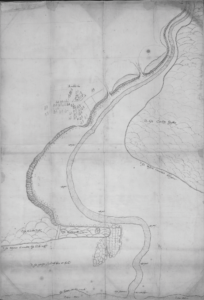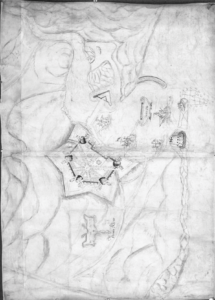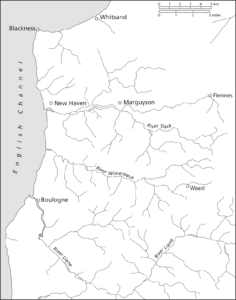Murphy, Neil. The Tudor occupation of Boulogne: conquest, colonisation, and imperial monarchy, 1544-1550. Cambridge. Cambridge University Press.
Published in January 2019
https://doi-org.mutex.gmu.edu/10.1017/9781108653046
When you think of Early Modern England and what family was responsible for stabilizing and growing England into a global empire, the Tudor family is that family. In Neil Murphy’s The Tudor Occupation of Boulogne: Conquest, Colonisation, and Imperial Monarchy, 1544-1550. Murphy examines and analyzes the occupation of Boulogne under the rule of King Henry VIII which would start British Imperialism. Neil Murphy is an associate professor of History at Northumbria University in Newcastle, England and is the author of three books. The Captivity of John II, 1356-60: The Royal Image in Later Medieval England and France (2016), Ceremonial Entries, Municipal Liberties, and the Negotiation of Power in Valois France, 1328-1589 (2016) and The Tudor Occupation of Boulogne: Conquest, Colonisation, and Imperial Monarchy, 1544-1550 (2019). Which is his latest published book. Murphy specializes in Medieval and Early Modern France.
Neil Murphy’s book The Tudor Occupation of Boulogne: Conquest, Colonisation, and Imperial Monarchy, 1544-1550. He analyzes and examines historical data on Henry VIII’s occupation of Boulogne and how it impacted the Boulonnais people and the economics of the area. The occupation and colony in Boulogne is/was one of his most significant ventures despite not getting much attention. Henry VIII’s occupation in France and the way that he handled the conquest would lay the groundwork for future English occupations such as Ulster. “David Potter has provided a thorough study of the organisation of the war between Henry VIII and Francis I in the 1540s, though he does not deal with the nature of English rule at Boulogne and usually focuses instead on the religious change that occurred under his children, ignoring the final years of his reign.”1 When you think of Henry VIII; you think about his children and the fact that he had six wives His examination of the occupation of Boulogne gives us an insight into a military occupation that is rarely talked about when you discuss the Tudor dynasty and how it ties into the Early Modern England period that we are talking about in class
Murphy relies on and ties in several historical evidence that supports the two arguments that are discussed in each chapter. In the first chapter, King Henry VIII is starting his venture into Boulogne, where he will establish a colony. The only prior knowledge that I had of Boulogne was what William Palmer had to say about the conquest, having previously learned about the conquest when I was in high school. Murphy argues that the conquest was not a waste of millions but instead a sign of what was to come for the future of imperialism in England, that what happened in Boulogne served as a sort of blueprint to the future of England under the Tudors. The occupation of Boulogne was not seen by everyone as a success or even necessary. William Palmer called it a “useless military endeavor that cost £1,000,000” and Bruce Lenam said that that “he [Henry VIII] was pouring millions into a futile bid to re-create the Anglo-French empire of Henry V’ and placing his government ‘deep into debt in pursuit of strategic lunacies in France” (2)
Henry’s strategy in France was to lay claim to France and demand that the French pledge themselves to him, Henry VIII knew that the French would not listen to his demand and by making this demand/summon he was able to label those who did not pledge to be traitors and apply harsh methods of warfare against them which included taking their goods and their homes. Henry’s claim wasn’t based on claiming the throne, instead his claim to the French land was by conquest, which was unique. In 16th century Europe, the rules that were used in siege warfare offered little protection to those we were under siege and the citizens of Boulogne knew that. Henry VIII was clever in his tactics, he knew what the rules were, and he used them to further his cause in France, another unique about the occupation of Boulogne was that King Henry VIII personally led the siege himself, which was uncommon because being on a battlefield meant that the monarch was vulnerable and that enemies would target them. Henry leading the siege also gave him the ability to grant clemency to anyone that surrendered to him, which the port city of Boulogne did when they saw the size of Henry’s army. Henry VIII spared the citizens and gave them safe passage to the city of Abbeville. Even though Henry went against all rules of warfare up to this point, this moment would be essential to his occupation, this made him look like a just ruler and that those who fell in line behind him would be treated fairly. Which was not the truth because Henry would employ other tactics to keep the peasants in line. The takeaway from this chapter that I got was that King Henry’s occupation of Boulogne and the surrounding area did not go over well. The villagers who left Boulogne with Henry VIII’s protection were pillaged once they were out of sight by both the British and the French and were left exposed to the elements and at the mercy of others. Britian’s scorched earth policy along with the famine that would take place would result in the deaths of the refugees and other villagers.
Chapter 3’s focus was on Cartography and how King Henry and the British used treaties and their power to enact laws upon the Boulonnais along with the use of maps to benefit Henry VIII’s occupation of the Boulonnais lands. As stated in the second paragraph by William Palmer, the occupation and conquest in the area put significant financial strain on the British people and played a factor in the Treaty of Camp, the people back home did not want to be involved in conflict in France. So, Henry agreed to give the area back to the French after a period of eight years in exchange for money, although evidence shows that Henry planned to keep the territory for longer, if not permanently. Mapping was another way that Henry and the British ruled over the area, they would change the landscape in the Boulonnais to support their occupation. In the figure below, what you see is the village of Ambleteuse, the picture shows the village which contains a church and 32 houses. The figure after that is when the church and the surrounding houses were destroyed and replaced by a large fortress.


Both maps were made by John Rodgers, and they show how the area was developed and changed under Henry VIII, it went from containing housing and a church to becoming New Haven, a military stronghold that helped the British keep control of the Boulonnais.
In the next chapter, it discusses the British Settlement in the Boulonnais which had been started in the previous chapters.

The above photo shows English Settlements in France if you look closely at the above figure, you will note that all settlements by the British were either on the coast of France or had direct access to a river. This was because the British would use waterways to transport goods and men to and from locations. The lands that came under English rule, cultivation of the land played a significant role in the success of the colonies that Henry set up, without proper cultivation of the land, “As part of its efforts to encourage the cultivation of land, the privy council set limits on the number of animals those people given lands in the Boulonnais were permitted to transport from England.”3 These themes would continue in the following chapters and would lead to the author’s central point that the occupation of Boulogne under King Henry VIII was the start of English imperialism and was a pivotal moment and action late in his lifetime that would set up England under his children.
So, in conclusion, the strength of Neil Murphy’s book was that he showed both sides of the story, he showed those that agreed with Henry’s decisions and those that did not agree, and he then provided his own educated, scholarly opinion on what was going on and what was going on. He also was able to detail how Henry’s conquest in France during the 1540’s would be echoed later when England went into Ireland. The weakness of the book in my own opinion was that Murphy tried to cover so much in this book that details were missing, there is so much information that is being given to you that you are almost forced to accept what the author was saying and some of the sources that he (Murphy) used didn’t seem to originally be in English so the translations were difficult to understand, so I had trouble understanding the context of the quote or if it was accurate
Reviewed by Vincent Cervone, Graduate Student at George Mason University.